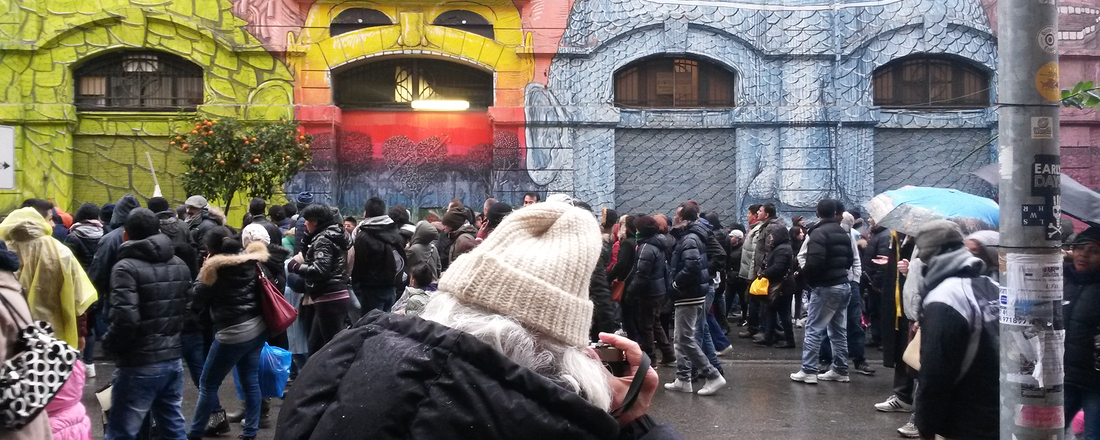Get updates from The Developer straight to your inbox Yes, please!
Rome: The “do-it-yourself city” takes on housing
Rome has one of the largest numbers of squats and self-managed buildings in Europe, as residents take on the its affordable housing crisis, Marina Engel reports

Described as a do-it-yourself city by Carlo Cellamare in his book, Citta fai-da-te (Donzelli editore, 2019), in Rome community action has compensated for government inertia and a diminishing welfare state for decades. Faced with a weak and ineffective local government, citizens are accustomed to ‘doing it themselves’, increasingly so during the pandemic when grassroots organisations proved indispensable in supporting poorer families.
In particular, a sense of community has been fostered by the Occupy movement. Rome has one of the largest number of squats and self-managed buildings in Europe, as residents combat a housing crisis in which public housing is in short supply and market rate prices are prohibitive. Today, around 10,000 people live illegally in the city’s numerous abandoned buildings. Grassroots organisations in occupied buildings are a consolidated presence and they have experimented for some time with adaptive building reuse and socio-cultural initiatives.
Porto Fluviale (River Harbour) is both a rare squat in central Rome and a popular tourist attraction. Giant multi-coloured faces, drawn on the building’s façade, stare out onto the street; on a lateral wall, a huge ship packed with property developers is displayed under attack by squatters. It is the story of Porto Fluviale, as told by Blu, a famous street artist.
Home to 56 families of 13 nationalities – mainly South Americans, North Africans and Italians – residents have overcome cultural and religious differences to self-manage the edifice as a collective
The squat was founded nearly 20 years ago when a group of 200 homeless broke through the gates of a derelict military warehouse belonging to the Ministry of Defence. This industrial archaeological monument has been occupied ever since. Home to 56 families of 13 nationalities – mainly South Americans, North Africans and Italians – residents have overcome cultural and religious differences to self-manage the edifice as a collective. They have restored the building, constructing self-built homes for each family and providing common spaces for the community. Notwithstanding threats of eviction, they have opened their doors to the neighbourhood to offer a range of socio-cultural services.
Located in fashionable Ostiense, a rapidly gentrifying industrial zone, Porto Fluviale stands as an emblem of a grassroots housing movement that has defeated property speculation by reusing a historical building to provide accommodation for those who need it and contributing to the social cohesion of the district. Last year, the collective formed a co-design team with Rome 3 University Architecture School to devise an adaptive reuse scheme to refurbish the building, provide legal public housing for its inhabitants and, above all, preserve the squats’ unique identity. This bottom-up development scheme, backed by the local government, was awarded Italy’s European Union Recovery Funds. The hope is that it will serve as a model for other squats in disused buildings in Rome as well as an example of inventive forms of communal living ever more pertinent to these post-pandemic times.
The collective formed a co-design team with Rome 3 University Architecture School to refurbish the building, provide legal public housing for its inhabitants and preserve the squats’ unique identity
Rome’s youth have taken the leading role in community action. Teenagers originally set up the association Cinema America when they took over and renovated a derelict cinema that was about to be demolished to create a luxury housing-block.
After launching an outdoor cinema movement that continues to help unite neighbourhoods, they won a public tender to reinstate the disused cinema Troisi, designed by rationalist architect, Luigi Moretti. Today, it is one of Rome’s most dynamic venues and houses both Cinema America’s headquarters and a unique 24/7 study room for students.
While Cinema America encourages people to leave their computer screens at home and assemble in front of the big screen, Scomodo is a Generation Z organisation and a print journal that aims to guide its generation away from the web to slow independent information. The word Scomodo means uncomfortable and the aim is not to conform to society but to enable young people to ‘contribute to turning this country into the one we would like to live in.’ In its Notti Scomode (Uncomfortable Nights), the collective restores abandoned buildings to the community in one night sit-ins. Characterised by performances of emerging musicians and artists, and attended by thousands of young people, Scomodo’s Nights exemplify the need to reuse Rome’s disused buildings and construct new cultural models. Unlike Cinema America that is backed by both public and private funding, Scomodo remains fiercely independent and eschews sponsorship. Its headquarters are at Spin Time Labs, another well-known multi-cultural squat.
Under 30s are also at work reactivating the Roman art scene. Driven out of the centre by high rents, artists have moved into empty warehouses and factories in the cheaper city outskirts. There, they have formed collectives to support each other, sharing work spaces, organising their own exhibitions and producing publications.
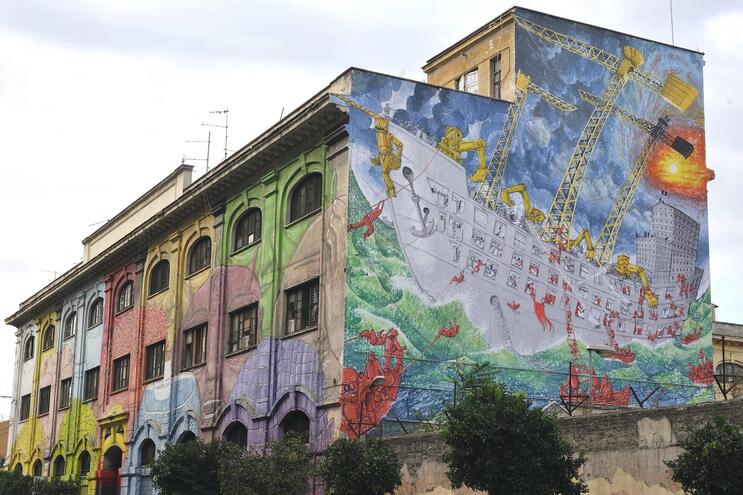
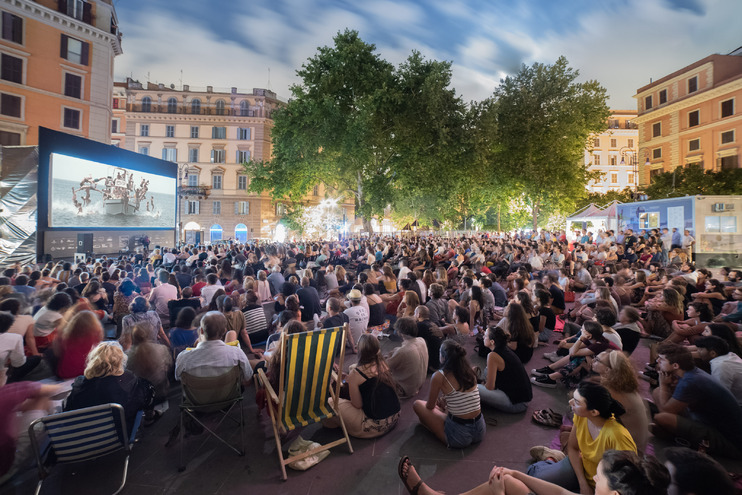
‘In a city like Rome, a group has a stronger voice than an individual,’ commented an artist from the collective Spazio in Situ, based in Tor Bella Monaca (Tower of the Beautiful Nun). Sadly, it is a misleadingly poetic name for the capital’s poorest district, infiltrated by the local mafia.
Fractured by a highway, this huge 1980s public housing complex, is dominated by grey 15 storey cement towers that hover over decaying prefabricated units. Like numerous public housing schemes in Rome constructed between 1969 and 1989, Tor Bella Monaca was seen as a solution to the capital’s accommodation crisis. Although it was planned as an autonomous neighbourhood, basic services were never installed and residents continue to live in poorly constructed buildings. Had Leon Krier’s masterplan been approved over a decade ago, the whole suburb, inhabited by 30,000 people, would have been demolished and rebuilt.
Fortunately, community activism has been a force for change. Resilient citizens have restored dignity to the neighbourhood. They have battled to obtain primary services and renovated common spaces and green areas. Defying the local mafia, they have helped revitalise the community to advance socio-cultural initiatives and secure a future for their children. Women are protagonists of some of the most enterprising ventures that include: Cubo Libro (Book Cube) a tiny, self-managed ‘public’ library supported by book donations where over three thousand books cram every inch of a once abandoned, cube-shaped building. La Casa di Alice (Alice’s House) was founded by a group of mothers in the R5 building, one of Rome’s principal drug trafficking centres. Determined to keep their children in school and off the streets, they occupied and restored a derelict building to procure a safe place in which children can study and play.
Defying the local mafia, they have helped revitalise the community to advance socio-cultural initiatives and secure a future for their children. Women are protagonists of some of the most enterprising ventures
Like other local associations, La Casa di Alice collaborates with LabSU - La Sapienza’s University’s urban studies laboratory - to advance long-term regeneration programmes for the neighbourhood and procure public funding and private sponsorship, recently both from the local municipality and the Paolo Bulgari Foundation. However, when Italy’s European Union Recovery Funds were awarded to a top-down scheme to requalify the R5 building, it struggled to win approval from the community. Tor Bella Monaca is not alone. Community organisations have succeeded in galvanising public authorities into taking action in a number of Rome’s public housing districts. The most successful schemes are those that rely on rigorous participatory processes.
Rome sprawls over 1200 square kilometres; for one of Europe’s largest metropolises, its population is small (3 million). While it encompasses one of the highest numbers of protected green zones, its outskirts abound with uninhabited, residual spaces. Many of these areas have slowly been appropriated by an urban wilderness, harbouring high levels of biodiversity. Rome’s only natural lake, Lago ExSnia is a case in point.
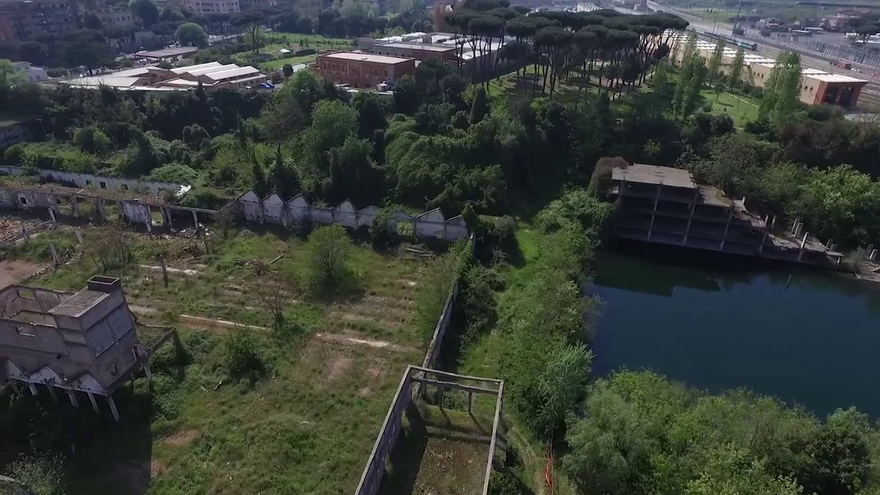
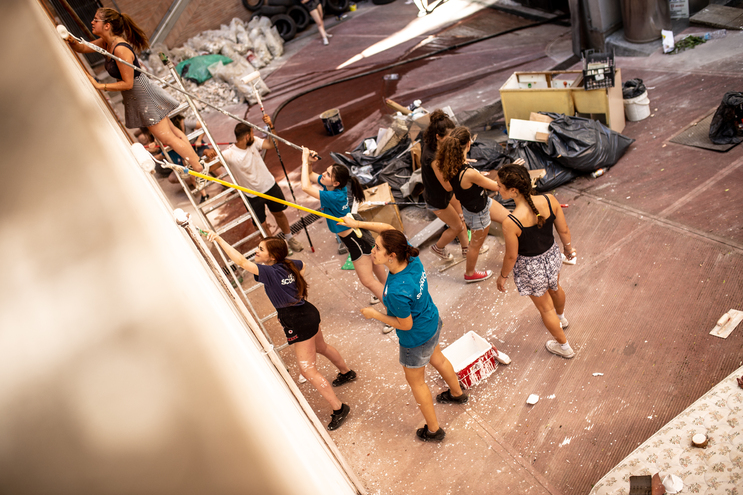
In 1992, Antonio Pulcini, a Roman property developer, started work on a project to convert a textile factory in disuse since the 1950s, the Snia Viscosa, into Rome’s biggest shopping centre. As a huge real estate project in Pigneto - one of the highest density districts in the capital - it was opposed by the local community who sought to protect the only green zone in the neighbourhood. When builders dug into the ground to excavate a pit for an underground parking lot, they accidently hit an aquifer, water flooded the cavity and proved impossible to divert. The Lago ExSnia formed around the concrete skeleton of the aborted shopping mall.
Joining forces with grassroot organisations, activists occupied one of the factory’s buildings to prevent further speculation. Over the last 30 years they have rallied Roman citizens to demonstrate against the redevelopment and pressure the local government to expropriate the land. The battle to preserve the lake has engaged the attention of environmentalists, academics, artists, film directors and even a famous Italian Rap band Frontali Assalti, making headlines on national television.
Meanwhile, an extraordinary ecosystem has developed around the 1hectare lake. Over 300 different plant types are nourished by the water’s nutrients. The lake is closely monitored by the World Wildlife Foundation and is home is to 90 bird species and four EU priority habitats.
Over time, the local municipality has expropriated large portions of the land that have been revamped as a public park, Parco delle Energie, self-managed by a neighbourhood - led Forum whose members act as the park’s custodians. In 2020, the Regione Lazio (Rome’s Regional Authority) declared the lake and the park as a ‘natural monument.’ But the battle is not over; Pulcini still owns a third of the land.
Community-led activism has restored an urban oasis to Rome’s citizens and united a neighbourhood behind the slogan ‘No Cement in East Rome.’ For now, the operation is self-funded. The ambition is to convince public authorities to appropriate the remaining land and establish an ‘ecological corridor’ across the whole area. In the words of Assalti Frontali ‘In the middle of cement monsters/the lake is a dream come true.’
Marina Engel set up and curated the contemporary art program at the British School in Rome, before founding and directing its architecture program. She now works as an independent curator and writer, based in Rome.
Sign up to our newsletter
Get updates from The Developer straight to your inbox
Thanks to our organisation members
© Festival of Place - Tweak Ltd., 124 City Road, London, EC1V 2NX. Tel: 020 3326 7238
